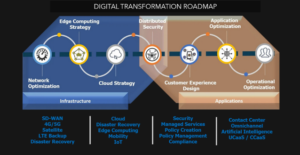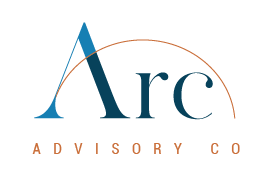The past year has given rise to enormous adoption of “cloud-based computing” solutions for business; specifically, cloud-based technologies. Much of the recent adoption has been fueled by heightened cyber-security attacks and the mad dash to “work from anywhere” triggered by businesses to quickly offer a safe and effective work environment for their staff during the pandemic. Going forward, cyber-security will continue to play a significant role in technology adoption. At the same time organizations will continue to adopt and support “work from anywhere” strategies.
The concept of a network-based computing environment dates as far back as the 1960s. However, many believe the first use of the term “cloud-based computing” occurred on August 9, 2006, when Google’s CEO Eric Schmidt presented the phrase during an industry conference.
However, for many, technology is still viewed as a short-term commodity, necessary to resolve short-range convenience or fix. Digital Transformation requires a strategic, long-term course of action to maintain all areas of a business, including operations, staff, and clients.
What is Digital Transformation? At its simplest form, “Digital Transformation” is a paradigm shift in the approach and adoption of digital technology to all areas of a business to address key challenges generated by the amalgamation of people, process, and technology.
Through transformation efforts, companies of all sizes can attain admirable business outcomes including operational efficiency, innovation, and rapid agility to changing situations.
Today, a consistent digital transformation strategy is necessary for business success. The right strategy is defined as a detailed and continual plan for integration of technology with human capital that is adopted to deliver product and service improvement, optimize workflow process and productivity, improve the customer and employee experience, reduce business risk, and manage expenses. A strategic approach begins by identifying and designing the right Target Operating Model (TOM), for the unique and desired outcomes of your business.
A TOM requires a variety of tools, solutions, and processes to establish an eco-system of integrated technology and processes that define the roadmap and “go-forward” strategy for supporting present day operations, while priming for future growth of the organization and technology performance.

A strategic roadmap should encompass policy and specific models using a mixture of technology solution options. Including network optimization, edge computing, cloud technology, distributed security, customer experience design, application optimization, and operational optimization.
- Network Optimization: comprises of technologies, tools, and techniques to improve and maintain maximum performance all domains across a company’s network.
- Edge Computing: is computing that is performed at or near a company’s source of data, instead of depending on a cloud solution that is delivered across a multitude of data centers.
- Cloud Technology: means storing and accessing applications and over the Internet instead of on a computer hard drive.
- Distributed Security: means a diverse, layered, security system that does not rely on a single application or centrally controlled server.
- Customer Experience: is the holistic perception customers have to any direct or indirect contact with your company.
- Application Optimization: comprises of technologies, tools, and techniques to amplify the performance or functionality of a network.
- Operational Optimization: redefines the interactions and changing functionality of business processes by ensuring business operations perform as efficient and effective as possible.
Whether you are a startup organization or large company with an Information Technology team, there are numerous technology providers who are able to help by offering experiential expertise that compliment or empower existing IT teams, provide guidance through the maze of technology solution options, and to design and implement the right Target Operating Model – all to deliver the desired results for business.
Author:
Jim C. Jarrells
Jim provides advisory and design services to assist in the transition and adoption of Information Technology solutions for business. He can be reached at 859.509.7737 or jjarrells@jdconsultingllc.com

